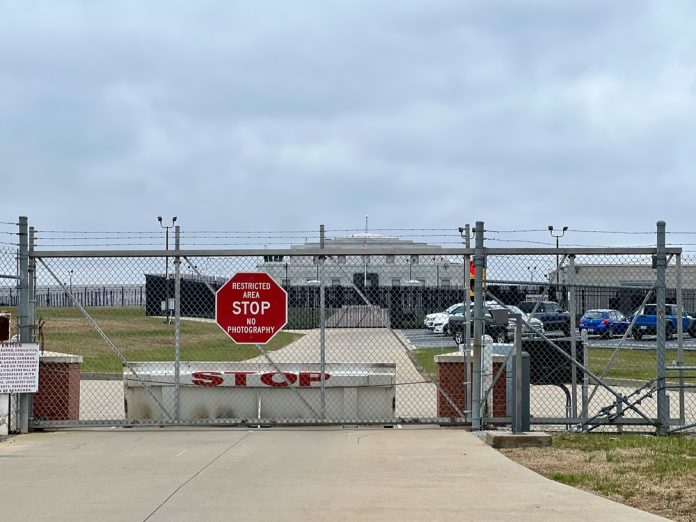
Trump administration’s strategic reallocation of NOAA staff exposes critical weather service challenges amid budget constraints, aiming to prioritize disaster-prone areas despite outcry from former NWS directors about potential “needless loss of life.”
Key Takeaways
- The Trump administration is reallocating NOAA employees to fill 76 critical roles in the National Weather Service, particularly in disaster-prone areas following necessary staff reductions.
- The NWS currently faces a 19% vacancy rate with some offices critically understaffed, potentially impacting vital forecasting services that save lives and billions of dollars annually.
- Despite the modest $4 per year cost to the average American, the NWS delivers substantial economic benefits through accurate weather predictions and disaster warnings.
- Budget adjustments are necessary but have raised concerns from meteorologists and industries dependent on weather data, particularly as extreme weather events become more common.
Addressing Critical Weather Service Needs
The Trump administration has initiated a targeted reallocation of NOAA personnel to address severe staffing shortages at the National Weather Service. This strategic redistribution aims to fill 76 essential positions, with a special focus on deploying meteorologists to regions prone to natural disasters. The restructuring follows necessary staff reductions to align the agency with fiscal responsibility goals. While NOAA spokesperson Monica Allen has been reluctant to provide specific details on the personnel changes, she emphasized that the agency’s primary commitment remains public safety and effective weather forecasting capabilities.
Historical context underscores the critical importance of maintaining effective weather services. In 1925, a tornado struck with no warning, resulting in 695 deaths – a tragedy that would be preventable with today’s forecasting technology. The NWS’s current 19% vacancy rate poses challenges to maintaining the advanced warning systems Americans have come to rely upon. Some offices are operating with severely reduced staff, impacting their ability to launch weather balloons and maintain critical forecasting equipment like Doppler radar systems.
Efficiency vs. Concerns
The Trump administration’s approach to NOAA staffing represents a commitment to fiscal responsibility while maintaining essential services. The National Weather Service costs the average American approximately $4 per year while delivering substantial economic benefits through accurate forecasts that protect lives and property. This represents remarkable efficiency compared to similar services worldwide, as noted by meteorological experts. The current restructuring prioritizes key forecasting positions in areas most vulnerable to severe weather events, ensuring resources are allocated where they’re most needed.
“We have [a more] efficient level of [staff compared] to the number of people we’re serving than any other country in the world by two orders of magnitude,” said Louis Uccellini.
Despite the clear focus on efficiency, some critics like Rep. Zoe Lofgren have expressed concerns that the repositioning of staff could potentially weaken NOAA’s general capacity. The administration maintains that these changes are temporary measures designed to address immediate needs while longer-term staffing solutions are developed. The NWS has publicly committed to continuing to fulfill its core mission of providing life-saving weather forecasts and warnings, even as it adjusts to new operational realities.
Balancing Budget Constraints and Public Safety
A group of five former NWS directors has raised alarms about potential safety implications of the staffing adjustments. Their concerns highlight the genuine tension between fiscal responsibility and maintaining essential government services. The Trump administration is navigating these challenges while prioritizing the most critical functions of the weather service. The strategic reallocation focuses on ensuring that disaster-prone areas have adequate meteorological coverage, especially during hurricane and tornado seasons.
“Our worst nightmare is that weather forecast offices will be so understaffed that there will be needless loss of life,” according to five former NWS directors.
Budget constraints have necessitated difficult decisions across government agencies. In the case of NOAA and the NWS, the administration has opted to trim bureaucratic overhead while preserving core forecasting capabilities. This approach aligns with broader government efficiency goals while acknowledging the essential role that accurate weather forecasting plays in public safety and economic stability. The leaked budget draft suggesting additional financial adjustments represents the administration’s commitment to identifying further efficiencies while maintaining essential services for the American public.
Looking Forward
The Trump administration’s efforts to reorganize NOAA staffing reflect a broader commitment to government efficiency and fiscal responsibility. By strategically reallocating personnel to the most critical roles in disaster-prone areas, the administration aims to maintain essential forecasting capabilities while addressing budget realities. The NWS’s remarkable efficiency – delivering substantial value at minimal cost to taxpayers – provides a foundation for maintaining this vital service even amid necessary fiscal constraints. Moving forward, the administration will continue to evaluate operations to ensure optimal use of resources.
“The net result is going to be massive economic harm,” said Daniel Swain.
With extreme weather events continuing to challenge communities across America, the administration remains committed to ensuring that the National Weather Service can fulfill its core mission of protecting lives and property. The current staffing adjustments represent a pragmatic approach to addressing immediate needs while developing sustainable long-term solutions. By focusing resources on the most critical forecasting functions and disaster-prone regions, the Trump administration is working to balance fiscal responsibility with the essential public service of accurate and timely weather prediction.













